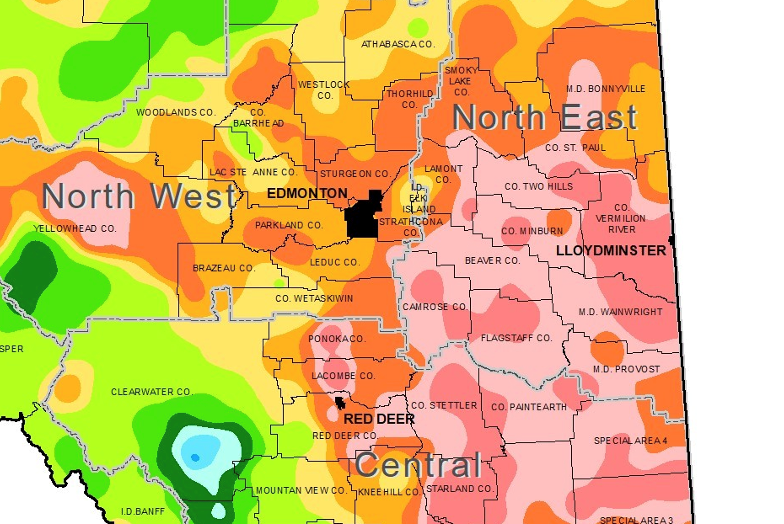BONNYVILLE – In early April, the Lakeland Agricultural Research Association (LARA) hosted a seminar about livestock management during drought conditions at Flat Lake Hall.
Maria Angelica Ouellette, research scientist at LARA, says the seminar on April 9 was about letting growers and producers become aware of what may be coming with this year's growing season, which could include a period of intense drought.
“We have a situation where there is a month, or two months, where no precipitation occurs,” she says, explaining this can be harmful to cash or forage crops that are usually grown later in the season when most precipitation should occur.
Melissa Orr’Langner with Alberta Agriculture and Irrigation acknowledged the potential of a drought and spoke about what producers could do to alleviate its effects, including building wells or dugouts.
Producers should consider factors that might pose a negative effect to a dugout, such as being mindful of proximity to sources of contamination or placement. A dugout should be away from trees, for example, as trees could reduce natural aeration or contaminate water via organic matter.
Restrictions are in place when building a dugout and producers are encouraged to be aware of them. Approval is necessary if the dugout is in a watercourse, waterbody, or wetland, or if it would change the water flow on adjacent land.
Controls are also in place to address the size of the dugout, and where the water to fill it may be coming from.
Application for both dugouts and wells can be completed at the Digital Regulatory Assurance System (DRAS) website at: regulatoryassurance.alberta.ca/dras
Loss of moisture
Grant Lastiwka, a forage and grazing specialist, addressed how shifting weather patterns cause drought.
In parts of the Lakeland region, there has been a trend of decreasing moisture over the past six years, with a loss of four inches of moisture per year. So, he encourages producers to take advantage of programs like Alberta’s Resilient Agricultural Landscape Program (RALP).
RALP provides funding that may potentially cover all eligible expenses of producers implementing and sustaining projects for a duration of three years. More information is available online at alberta.ca/resilient-agricultural-landscape-program
Other tips from Lastiwka include agricultural decision-making and the importance of timing, such as selling cattle based on moisture levels; the importance of monitoring pasture growth and recovery time; and the idea of higher water-use efficiency with red clover for fertilization.
Resources
Lakeland This Week spoke to some farmers and producers after the seminar. They remain hopeful that a drought will not happen, but there is a common concern about what they will do if it does.
In an April 15 statement to Lakeland This Week, Jessi Rampton, press secretary to the Minister of Agriculture and Irrigation, says the Alberta government will continue to support producers through another potentially dry growing season.
“In response to the challenging weather conditions, Alberta's government has provided a variety of supports, tools, and resources to ensure farmers and ranchers across the province are supported,” says Rampton. This includes the Agriculture Financial Serivces Corporation's (AFSC) package of business risk management programs.
These programs are designed to address the distinct circumstances of individual producers and help offset the financial repercussions that may be caused by different challenges.
“The Moisture Deficiency Insurance program, for example, provides producers with coverage when their soil is too dry to grow feed or let their herd graze pasture,” says Rampton.
Over the years, Rampton says the Alberta government also improved the program to be more responsive.
“This includes providing monthly payments so that when hard times hit, producers get help faster as they work to put food on tables here and around the world,” Rampton says.
Lance Ouellette, research agrologist at LARA, acknowledges it can be challenging to apply for support and grants.
He encourages producers to book an appointment with LARA if they need help with application processes. They can drop by at LARA’s office in Fort Ken, or get more information online at laraonline.ca



